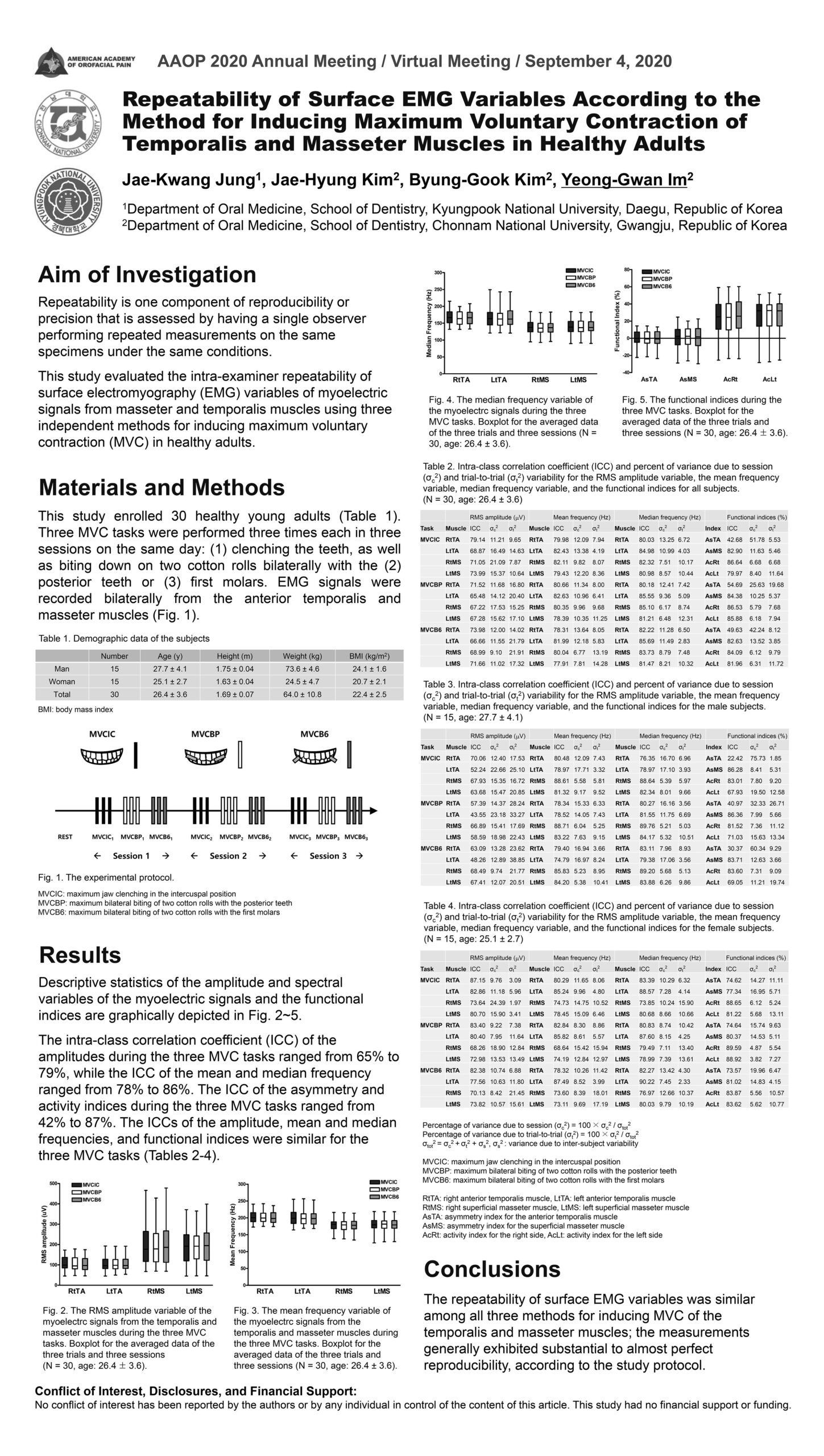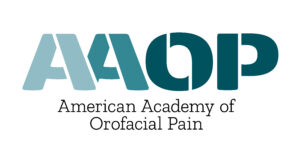Project Description
Repeatability of Surface EMG Variables According to the Method for Inducing Maximum Voluntary Contraction of Temporalis and Masseter Muscles in Healthy Adults
Authors: Jae-Kwang Jung1, Jae-Hyung Kim2, Byung-Gook Kim2, Yeong-Gwan Im2
Affiliations:
1Department of Oral Medicine, School of Dentistry, Kyungpook National University, Daegu, Republic of Korea
2Department of Oral Medicine, School of Dentistry, Chonnam National University, Gwangju, Republic of Korea
Aim of Investigation: This study evaluated the intra-examiner repeatability of surface electromyography (EMG) variables of myoelectric signals from masseter and temporalis muscles using three independent methods for inducing maximum voluntary contraction (MVC) in healthy adults.
Methods: This study enrolled 30 healthy young adults. Three MVC tasks were performed three times each in three sessions on the same day: (1) clenching the teeth, as well as biting down on two cotton rolls bilaterally with the (2) posterior teeth or (3) first molars. EMG signals were recorded bilaterally from the anterior temporalis and masseter muscles.
Results: The intra-class correlation coefficient (ICC) of the amplitudes during the three MVC tasks ranged from 65% to 79%, while the ICC of the mean and median frequency ranged from 78% to 86%. The ICC of the asymmetry and activity indices during the three MVC tasks ranged from 42% to 87%. The ICCs of the amplitude, mean and median frequencies, and functional indices were similar for the three MVC tasks.
Conclusions: The repeatability of surface EMG variables was similar among all three methods for inducing MVC of the temporalis and masseter muscles; the measurements generally exhibited substantial to almost perfect reproducibility, according to the study protocol.
Acknowledgments and/or Funding Source: None




Leave A Comment